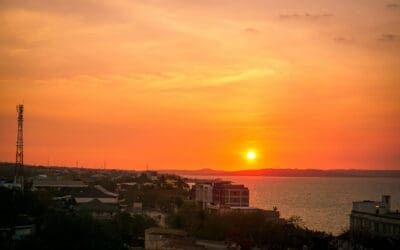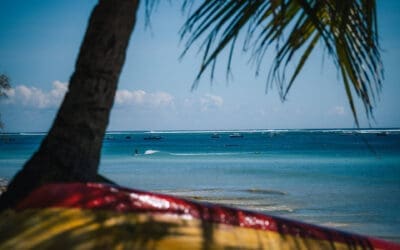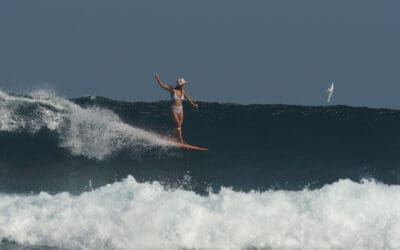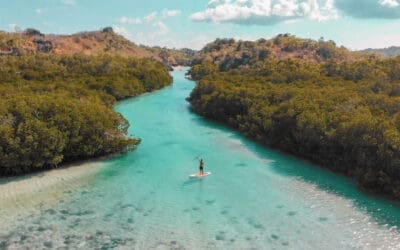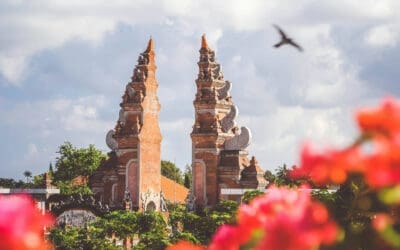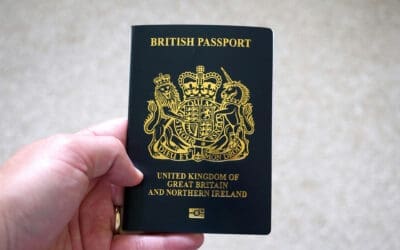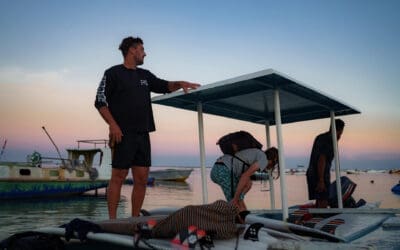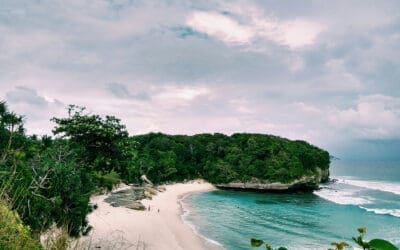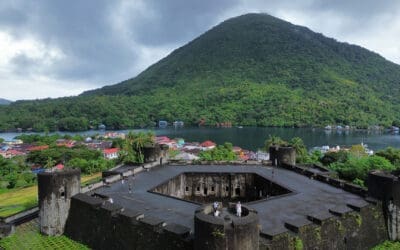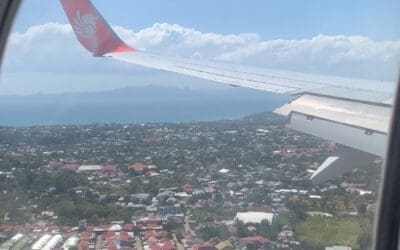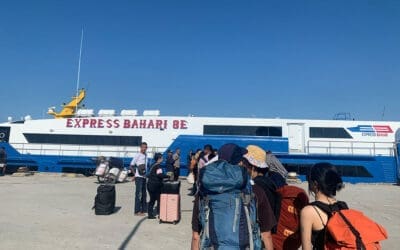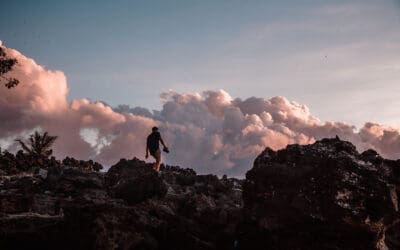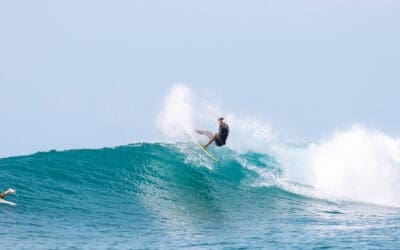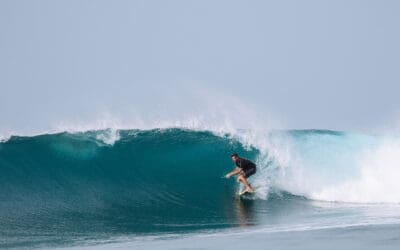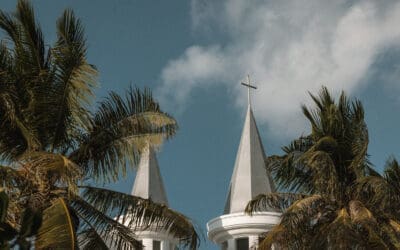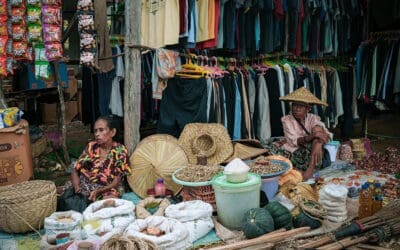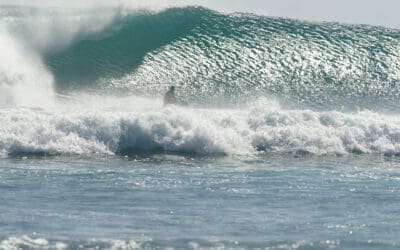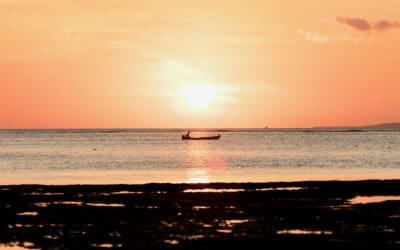Indonesia’s surf scene is no secret, and for good reason. With over 17,000 islands, this archipelago is home to some of the world’s best waves.
And while Bali and its famous Bukit Peninsula often steal the spotlight, there’s a a lot more surf waiting to be discovered in spots like the Mentawai Islands, Rote Island, Batukaras Java, Sumatra, and other parts of Indonesia that go beyond Bali’s iconic breaks.
If Indonesia is on your travel list or you’re already packing your bags, here’s a rundown of our top five surf spots every surfer should have on their bucket list.
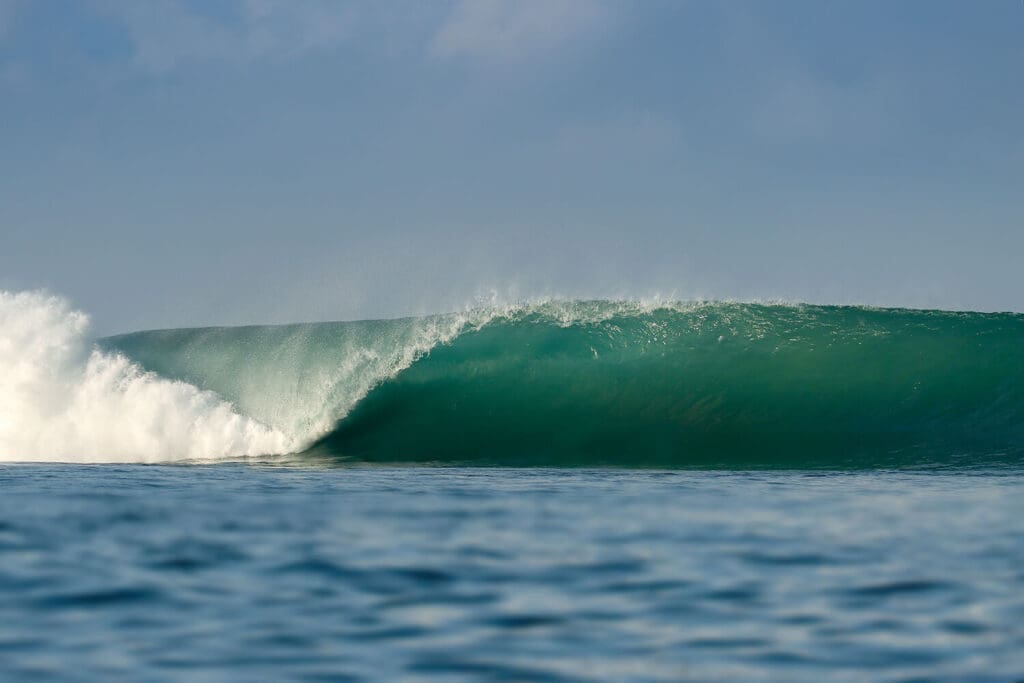
The Mentawai Islands, West Sumatra
The Mentawai Islands are like the holy grail for any surfer.
Located off the coast of West Sumatra, this archipelago is known for its powerful, consistent waves and remote, untouched beaches. With over 70 surf breaks, from mellow rollers to adrenaline-pumping barrels, the Mentawai Islands cater to every skill level.
If you’re looking for the classic Mentawai experience, try a surf charter. Boats allow you to hop between famous breaks like Lances Right (HTs), a barrel that peels as perfectly as it does powerfully, and Rifles, known for long, fast waves ideal for advanced surfers looking to chase down serious pits. On the other side, there’s waves like Beng Bengs or Burger World, mellower breaks that are perfect for intermediate surfers. Expect pristine beaches, dense rainforest backdrops, and incredible sunsets.
If you prefer to stay on land there are now several incredible resorts, villas and surf camps to choose from, ranging from basic dorms to luxury beach front villas like Villa Onu at HTs. Away from the coats, the island is blissfully free of massive hotels and luxury resorts leaving a rich culture and natural beauty intact.
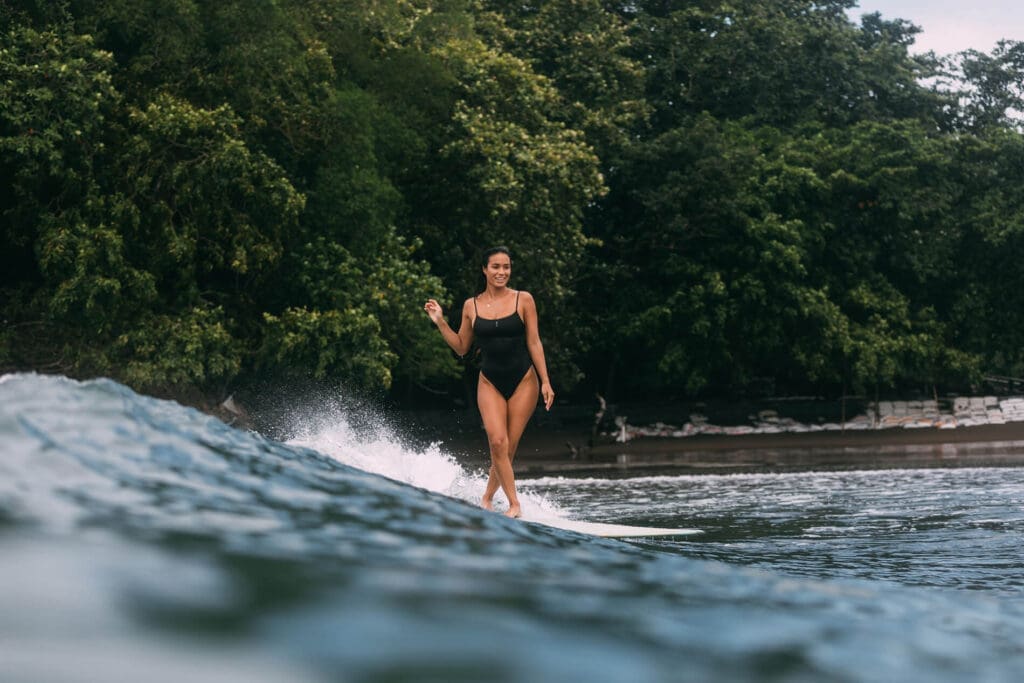
Batukaras, Java
Batukaras is often dubbed “the friendliest surf spot in Java,” and it’s easy to see why. With its laid-back vibe, gentle waves, and welcoming local community, Batukaras is the perfect spot for beginners and those looking to perfect their longboardiong technique. The surf here is a lot mellower than in Bali or the Mentawais, but it’s the perfect longboard wave.
It’s a breeding ground of pro Indonesian longboarders, like Flora Christin, Deni Blackboys and Tedi Kurniadi.
The main break, Point Break, is a long right-hand wave that’s ideal for long rides and mellow turns. It’s consistent enough to keep you entertained and gentle enough to help beginners find their feet. You will also find ‘Second Point’, and ultra fun wave but strong current when working, and the ‘Reef’ which works best in the wet season months.
If you are looking for something heavier, take a drive along the coast in either direction and you will find waves of all kinds.
After your surf session, grab a bite at one of Batukaras’ many warungs and restaurants, serving up traditional Indonesian dishes like gado-gado and nasi goreng. Stop by House of Sawa for great food and chill vibes.
Batukaras has that off-the-beaten-path, village charm that feels worlds away from busier surf spots, making it a hidden gem that’s easy to love.
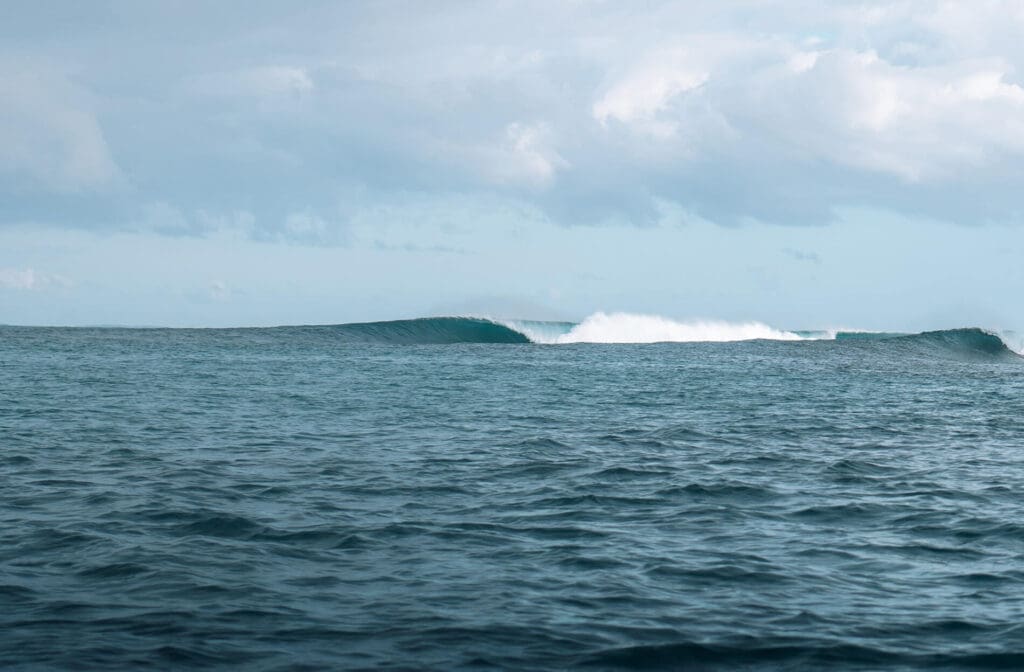
Rote Island, East Nusa Tenggara
Rote Island may not be as widely known as Bali or Lombok, but it’s definitely on the rise in Indonesia’s surf scene. Located just south of West Timor, Rote offers a unique surfing experience—think pristine beaches, clear turquoise waters, and uncrowded waves. The island’s remote feel gives it a rustic charm, but don’t let the relaxed vibe fool you; Rote’s waves can be serious.
The main break, T-Land, is a long, left-hand wave named after G-Land and that’s often compared to Uluwatu in Bali. T-Land offers multiple sections that form Indoensias longest left hand wave. The wave’s more forgiving nature makes it suitable for both intermediate and advanced surfers.
Rote is also home to several world class rights that come alive in the right conditions.
When you’re not surfing, there’s plenty to do on Rote. The island is stunningly beautiful and relatively undeveloped, so you can explore untouched beaches, snorkel in clear waters, and experience the local culture.
Rote is a little more difficult to reach than other spots, but the journey is well worth it for the world-class surf and the tranquility of this unspoiled island.
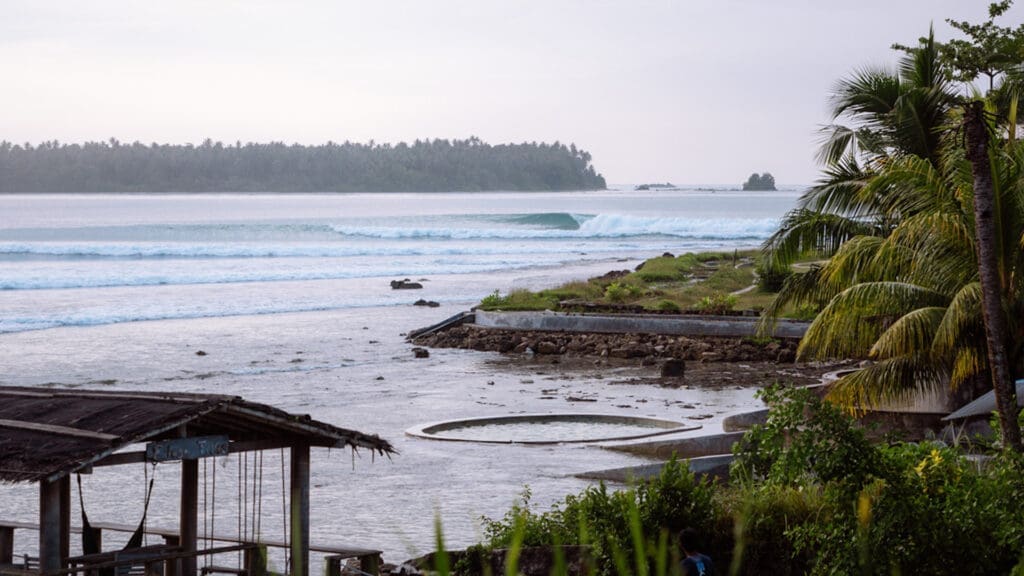
Sumatra (North and West Coasts)
Sumatra, Indonesia’s sixth-largest island, is packed with surf destinations that attract surfers from around the globe.
From the world-famous Lagundri Bay on Nias Island in the Northern Sumatra Province, to the hidden gems along the North and West coasts, Sumatra has something for every surfer.
Lagundri Bay on Nias is probably Sumatra’s most famous wave. A right-hand reef break that can can throw boat destroying 10ft kegs on it’s day. Known as “The Point,” this wave offers long, hollow rides that will challenge even the most seasoned surfers.
In 2005, Nias was at the epicenter of an 8.6 earthquake, that actually lifted the reef 2 meters in some places. It made the wave Indicators almost unsurfably shallow and heavy, only the local rippers and pros surf it. But it is said that the point became better following the earhtquake.
Meanwhile, Krui on the Sumatran west coast is gaining a reputation for its consistent swells and scenic breaks that cater to all levels.
Sumatra also has a unique jungle vibe, with thick rainforests and a slower pace of life. Between surf sessions, you can hike to waterfalls, explore local villages, and experience the raw natural beauty of Indonesia’s lesser-traveled paths.
Bali (Uluwatu and Beyond)
No list of Indonesia’s best surf spots would be complete without Bali, the island that introduced the world to Indonesian surf. Bali has waves for everyone, from the legendary barrels of Uluwatu and Padang Padang,to the beginner-friendly beaches of Canggu. The sheer variety of breaks and the island’s vibrant surf culture make it a must-visit for any surfer.
Uluwatu is Bali’s crowning jewel, first surfed by Steve Cooney and shown to the world in the Morning of the Earth film , which was released on February 25, 1972. It offers some of the best left-hand waves in Indonesia and is firmly cemented in the list of worlds most iconic surf spots
This break sits beneath stunning cliffs, creating an unforgettable backdrop for a surf session. Uluwatu’s different sections—Outside Corner, Racetracks, and The Peak—provide waves for varying skill levels, though it’s best suited for intermediate and advanced surfers.
For beginners or those looking for something more low-key, Canggu offers several accessible breaks along its black sand beaches. Canggu has exploded in popularity and is now a digital nomad haven with countless cafes and co-working spaces, so it’s easy to meet fellow surfers and enjoy Bali’s beachy lifestyle.
Bali’s surf scene is well-established, with surf schools, rentals, and accommodations at every level, making it an ideal destination for surfers of all abilities. And when you’re ready for a break from the waves, Bali’s vibrant nightlife, rich culture, and stunning natural beauty ensure that there’s never a dull moment.
The Impact of Over-Tourism on Bali’s Natural and Cultural Landscape
Bali’s beauty and world-renowned waves have made it an iconic destination, yet the heavy influx of tourism and rapid development are having serious consequences on the island. The sheer volume of visitors has led to waste management struggles, with beaches and waterways often littered with trash, polluting the ocean and damaging the very ecosystems that sustain the island’s allure. Uluwatu’s stunning cliffs, for example, have suffered from poorly regulated construction, with cliffside developments occasionally resulting in landslides, further degrading the landscape.
Water pollution has become another growing problem, impacting Bali’s oceans and coral reefs, and limiting access to clean water in certain areas. Meanwhile, the pressures of accommodating more visitors and their varied interests sometimes clash with local customs, with disregard for cultural practices and religious sites becoming a common issue. Temples, which are sacred to the Balinese, are sometimes entered without proper respect, and culturally significant ceremonies are too often treated as tourist attractions rather than moments of deep spiritual importance.
Bali is an irreplaceable gem, known not just for its waves but for its rich cultural tapestry and natural wonders. Visitors who respect the island’s fragile balance and tread lightly can help preserve its unique charm for generations to come. Sustainable travel practices, from respecting local customs to supporting eco-conscious businesses, are vital for ensuring that Bali remains a true paradise—for both its people and its visitors.
Indonesia’s diversity of waves is matched only by its incredible scenery, friendly locals, and unique cultural experiences. From the remote and pristine shores of Rote Island to the iconic breaks of Bali, every surf spot offers something unforgettable. Pack your board, bring a spirit of adventure, and get ready to experience some of the world’s best surf in Indonesia.
More helpful articles
Indonesian Airline Surfboard Baggage Fees
Wings Air Flights From Kupang to Rote Island NTT
How to Get to Rote Island, Indonesia


